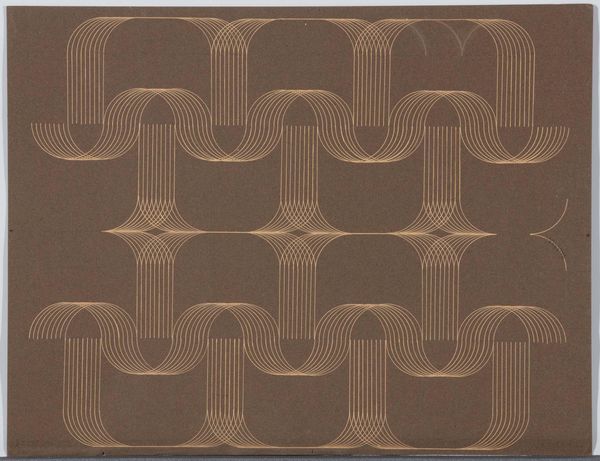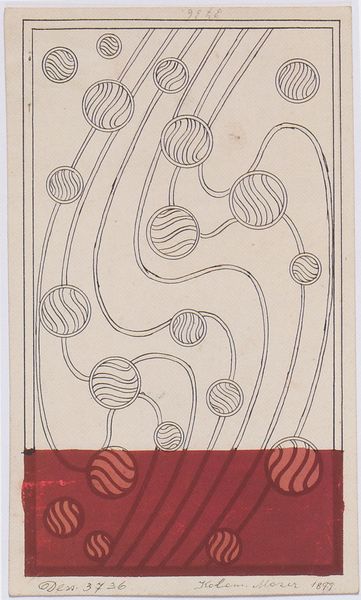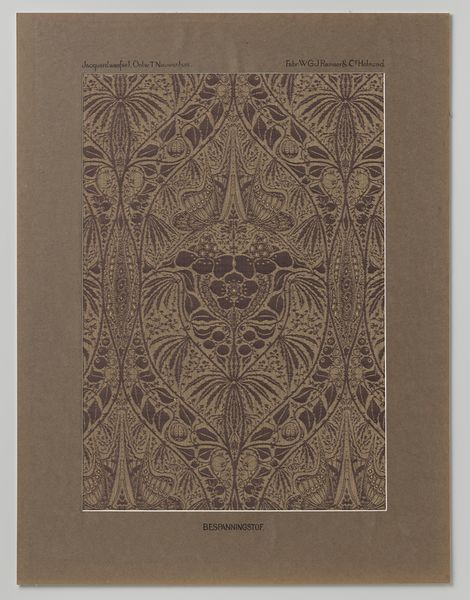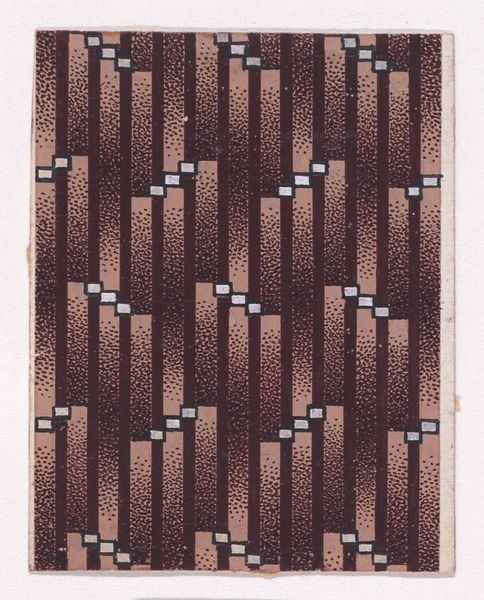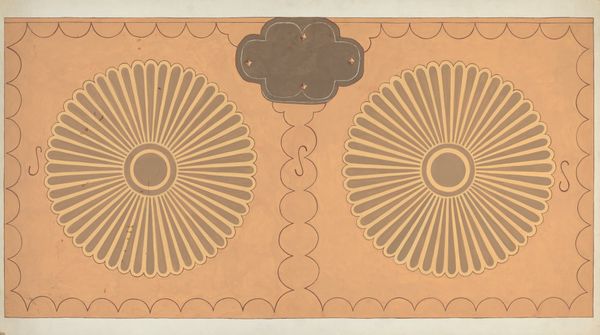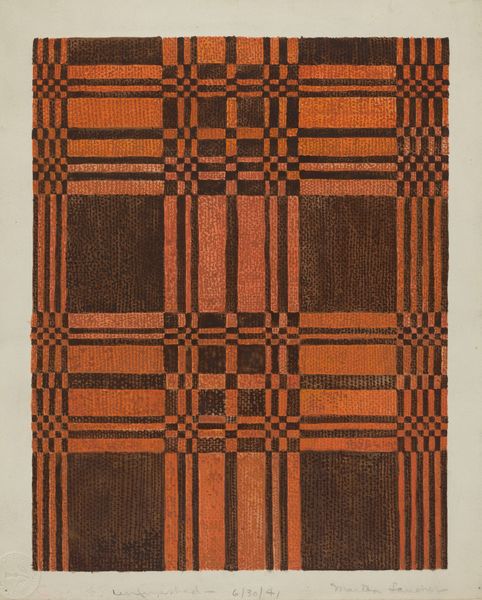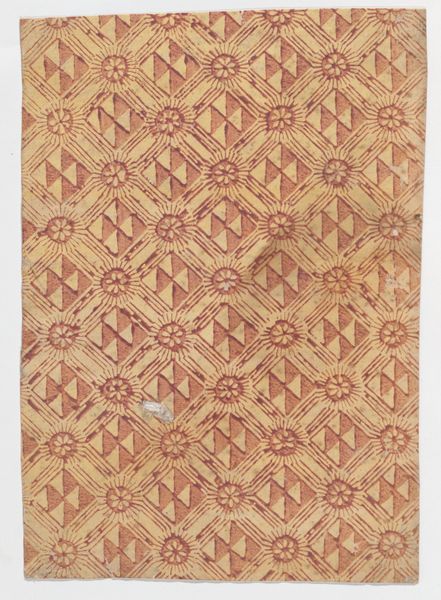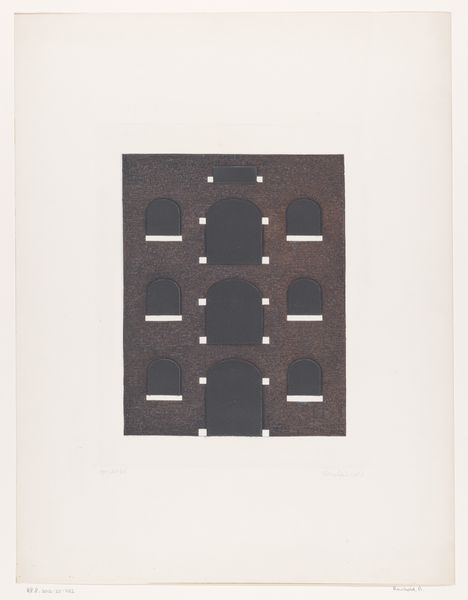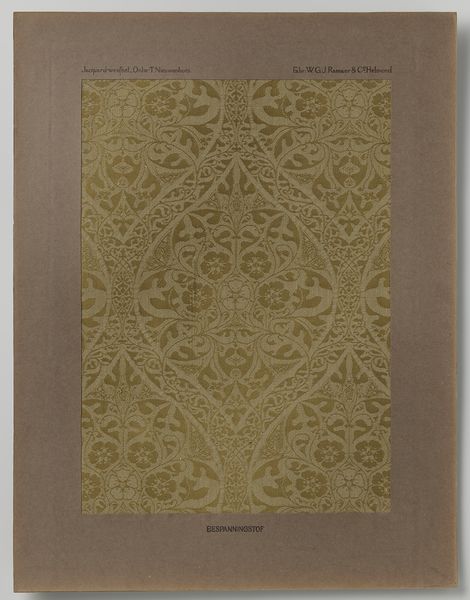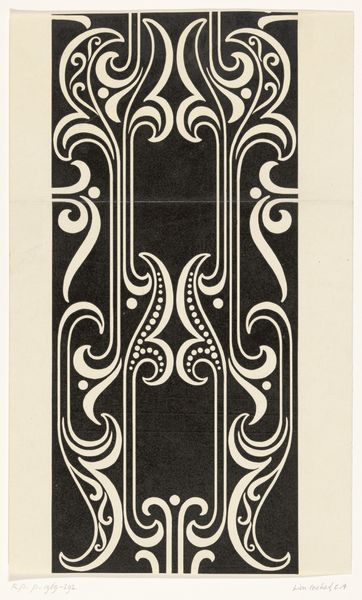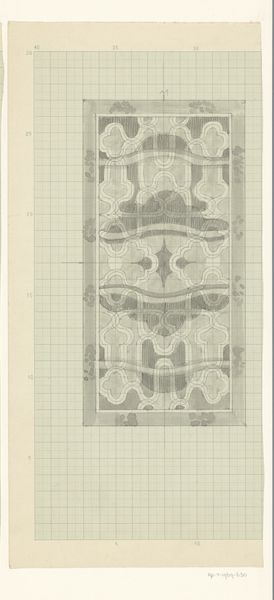
drawing, paper
#
drawing
#
natural stone pattern
#
paper
#
geometric pattern
#
abstract pattern
#
repetitive shape and pattern
#
organic pattern
#
geometric
#
geometric-abstraction
#
simple pattern
#
repetition of pattern
#
vertical pattern
#
abstraction
#
line
#
pattern repetition
#
layered pattern
Copyright: Soledad Sevilla,Fair Use
Curator: This is an Untitled work by Soledad Sevilla, created in 1969. Editor: My initial response is that this work feels incredibly contained, even stifled. The tight, repetitive pattern, paired with the muted color palette, creates a sense of almost claustrophobic order. Curator: I see your point. The linear precision and geometric regularity create a clear visual rhythm. Look at the meticulous arrangement of the lines—each curve, each parallel segment perfectly placed. It speaks to the core tenets of formalist abstraction. Editor: While I acknowledge the precision, I find myself thinking about the socio-political context of 1969. It's hard to ignore the intense cultural shifts occurring then, particularly in regards to female artists grappling with patriarchal structures in the art world. I wonder if this sense of confinement could also be interpreted as a coded commentary on those limitations. Curator: It's possible. The work could also be approached through the lens of semiotics; one could interpret the repetition of forms as signifiers in a broader system. The artist's use of line becomes a visual language in and of itself. Editor: Perhaps, but I see the work as something potentially more complex than pure aesthetic play. Women were actively fighting against prescribed roles. Therefore, Seville's choice to engage with geometric abstraction—a genre historically dominated by men—becomes inherently political. She's taking up space, asserting her voice through a language previously defined by others. Curator: A persuasive reading. I remain struck, though, by the objective relationships between the visual elements. The tension between the curved and straight lines, the figure-ground relationship created by the different colors – brown and cream—these are critical to understanding the visual impact. Editor: And I find myself continually drawn to the subtle imperfections. There's a slight irregularity in the lines and color density, like small disruptions in the imposed order. Those small differences perhaps expose the limits of any system of control. This isn't just a detached, formal exercise, it holds evidence of a person trying to reconcile a cultural landscape of constraint and the desire for liberation. Curator: Ultimately, this artwork provides abundant possibilities for interpretation, either through a rigorous structural examination of the elements or situated within the broader discourse of art and society in the late sixties. Editor: Indeed. And it proves that the beauty of art often lies in the productive tension between its inherent form and its reflection of the world around it.
Comments
No comments
Be the first to comment and join the conversation on the ultimate creative platform.
